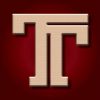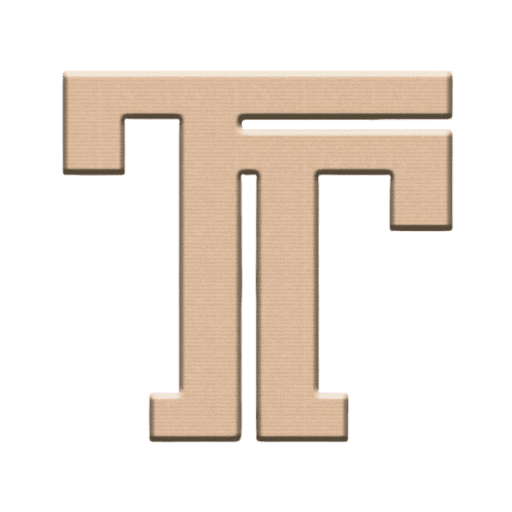Logo Language Overview
- Logo is a programming language derived from Lisp and others.
- Older programmers often had their first programming experience with Logo.
- Key feature is a “turtle” for drawing by picking up and putting down a pen and moving around.
Assignment Goals
- Practice designing and structuring a larger Rust program.
- Focus on modern programming skills and design patterns.
- Have fun creating an aesthetic and interesting application while connecting with programming history.
Assignment Requirements
- Build a Logo interpreter that writes to an.svg or.png image using the
unsvgcrate. - Handle various Logo commands for turtle control, variables, queries, conditionals, and math operations.
- Implement design excellence features for full marks.
1. Introduction to the Logo Language
Tokens
- A token can be a procedure (like a function), a variable (prefixed by
:), or a value (prefixed by"). - Procedures always take a fixed number of arguments.
- Values in Logo are always strings, but some like
"TRUE"and"FALSE"are interpreted as booleans and some can be parsed as numbers.
Program Structure
- A logo program consists of lines of text split into tokens by whitespace.
- Lines starting with
//or empty lines are ignored as comments.
2. Introduction to Unsvg
- The assignment uses the
unsvgcrate to generate SVG or PNG images. unsvg::Imagerepresents an image and has methods likedraw_simple_line.unsvg::get_end_coordinatesreturns where a line drawn from a given point would end.
3. How Your Program Will Work
- Produce a program called
rslogothat takes four arguments: a logo program file (.lg), the output SVG/PNG file path (.svg or.png), image height, and image width. - Read the logo program, parse and execute it line by line.
- Exit with a non-zero return code and print an error message if there’s an issue.
- Write an SVG or PNG using the
unsvgcrate if there are no issues.
4. Design Excellence
- Options for design excellence include making beautiful errors, achieving 80% test coverage, using a parser combinator library, creating a facility for language extensions, building a zero-copy program, contributing to the
unsvglibrary, or building a transpiler. - Markers will consider a reasonable attempt at one of these tasks as sufficient.
5. The Tasks To Complete
Part 1: Turtle Control (20%)
- Control the “turtle” which is like an invisible pen that can draw on the image.
- Turtle starts “up” (not drawing) in the center of the screen facing straight up.
- Commands include
PENUP,PENDOWN,FORWARD,BACK,LEFT,RIGHT,SETPENCOLOR,TURN,SETHEADING,SETX,SETY. - Turtle can go off the image without causing an error.
Part 2: Variables and Queries (20%)
- Implement the
MAKEcommand to create and assign variables. - Implement the
ADDASSIGNcommand for variable increment. - Support “queries” like
XCOR,YCOR,HEADING,COLOR.
Part 3: IFs, WHILE, [ ] (20%)
- Implement
IF EQandWHILE EQcommands for conditional execution and looping.
Part 4: Implementing Maths and Comparisons using a Stack (20%)
- Implement operations in Polish Notation like
EQ,NE,GT,LT,AND,OR,+,-,*,/. - Implement stack operations for
IFandWHILE.
Part 5: Logo Defined Procedures (20%)
- Implement procedures analogous to functions in other languages.
- Procedures are defined with a line starting with
TO, followed by the procedure name and arguments, and ending withEND.
6. Common Questions
Design Approaches
- Line-by-line approach: Execute each line in turn while storing more data and state.
- Parse then execute approach: Convert the text into an Abstract Syntax Tree and read from it.
Planning
- A happy middle is suggested: think about the approach and read through the assignment without spending more than 30 minutes planning.
Using AI
- Permitted uses of AI include seeking help with concepts, pattern matching, generating skeletons, and writing tests.
7. Other Information
Submission
- See instructions at the bottom of the page.
Using Other Crates
- Can use crates from crates.io under certain conditions.
Marking Scheme
- Marked on Mechanical Style (10%), Functional Correctness (40%), and Idiomatic Design (50%).
8. Formal Stuff
- Assignment is individual.
- No joint work or sharing of code allowed.
- Use of code-synthesis tools is permitted but with caution.
- Submit work by running
6991 give-crateby Week 7 Wednesday 17:00:00.

![[SOLVED] COMP6991 Rust Logo Interpreter Assignment](https://assignmentchef.com/wp-content/uploads/2022/08/downloadzip.jpg)

![[SOLVED] CIS 3260 Introduction to Programming: online banking application](https://assignmentchef.com/wp-content/uploads/2022/08/downloadzip-1200x1200.jpg)

Reviews
There are no reviews yet.